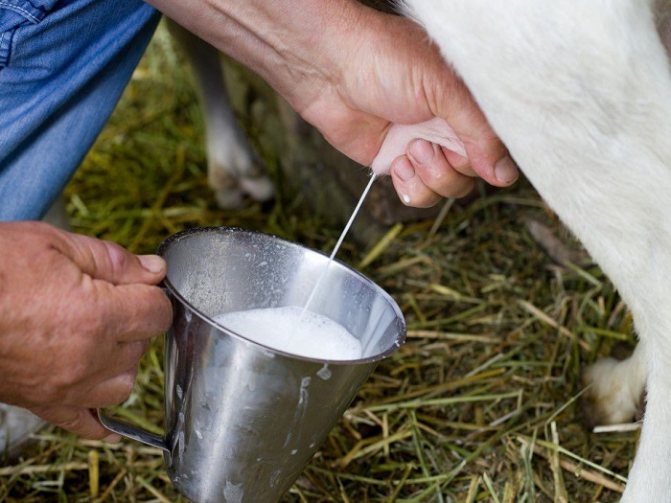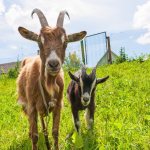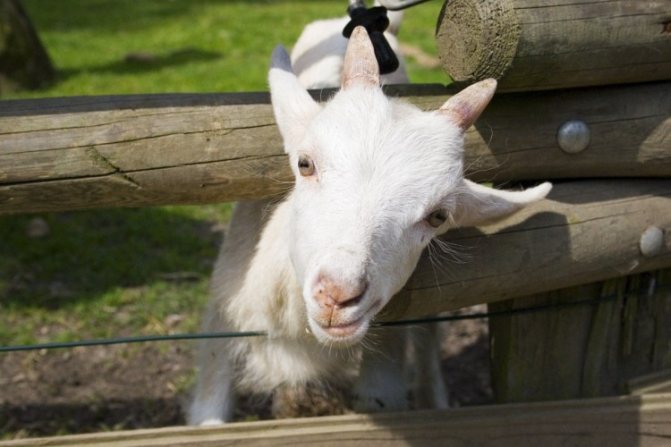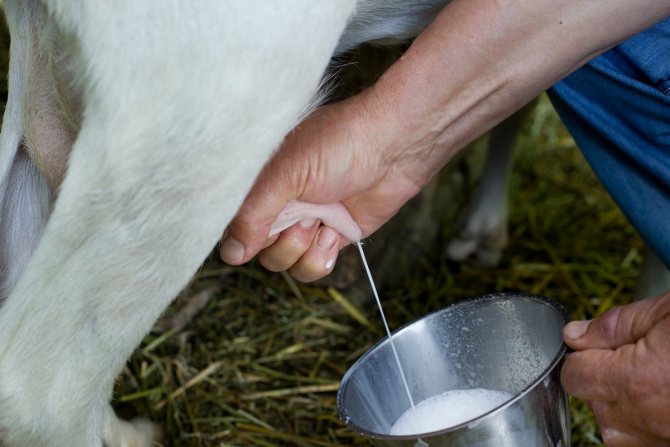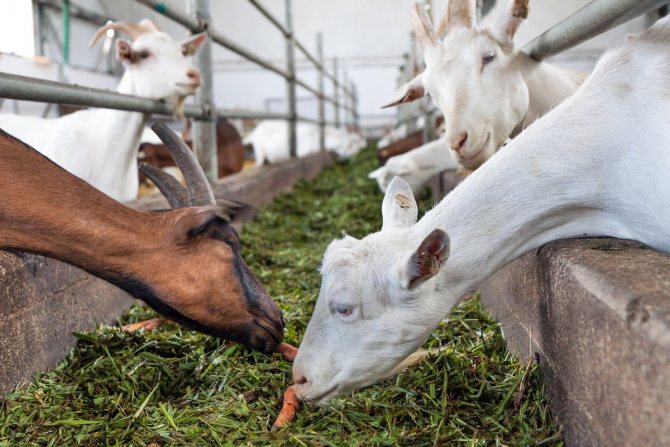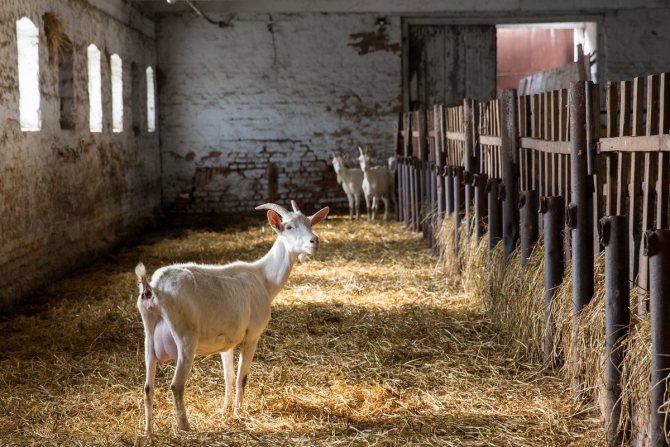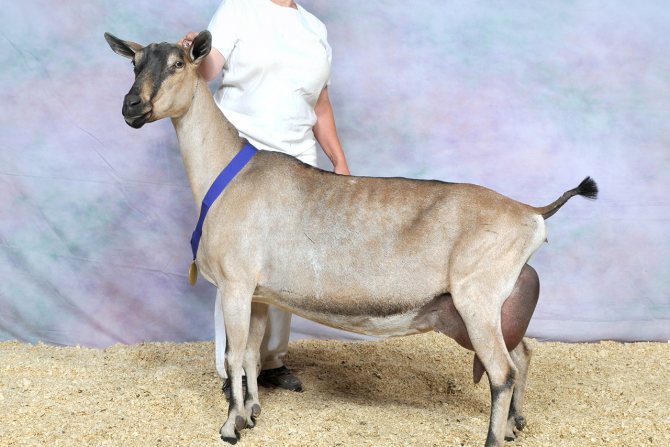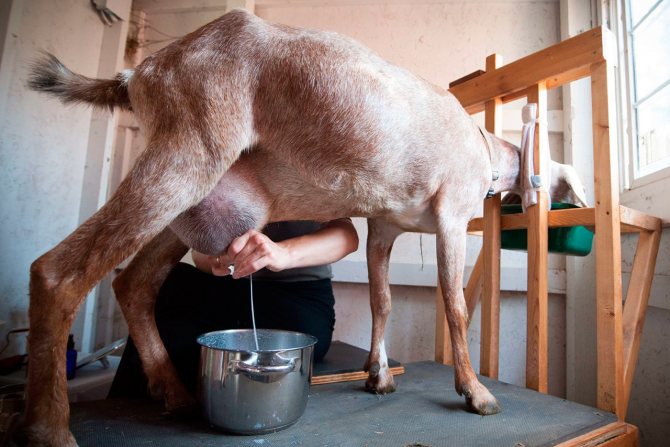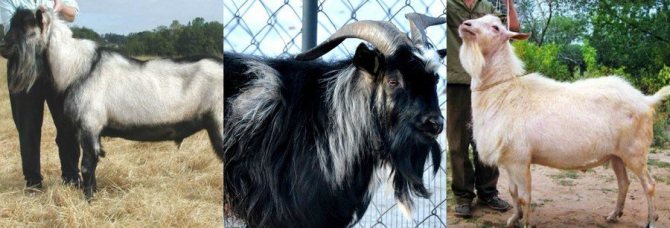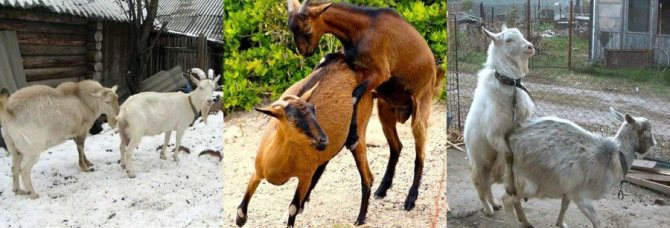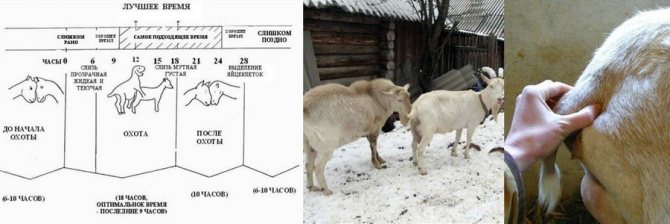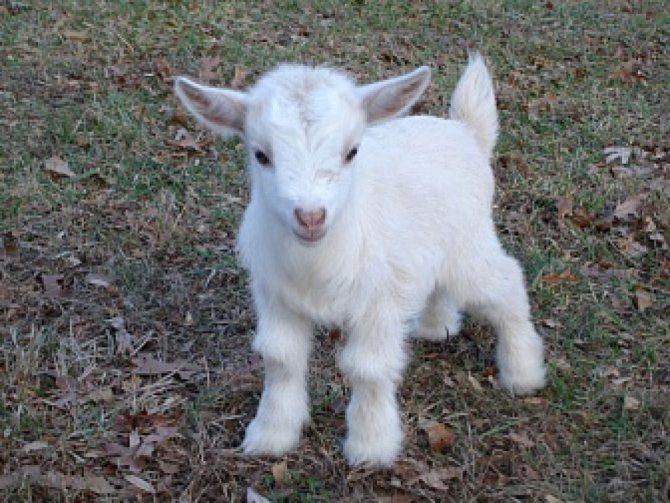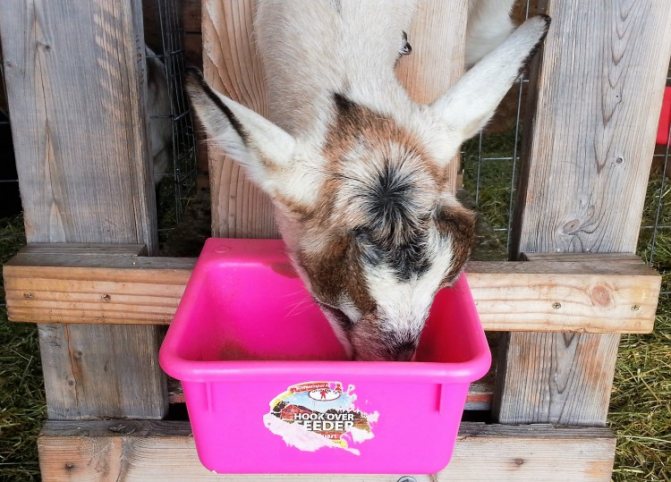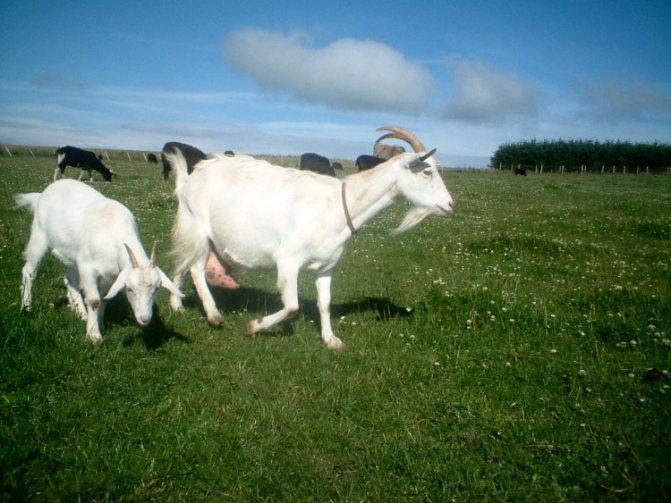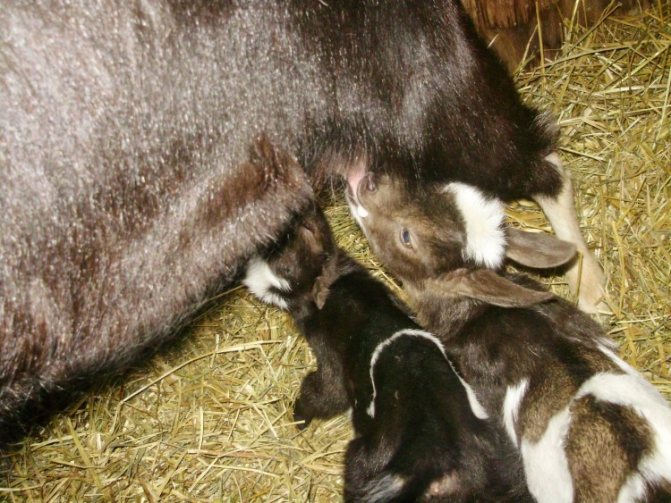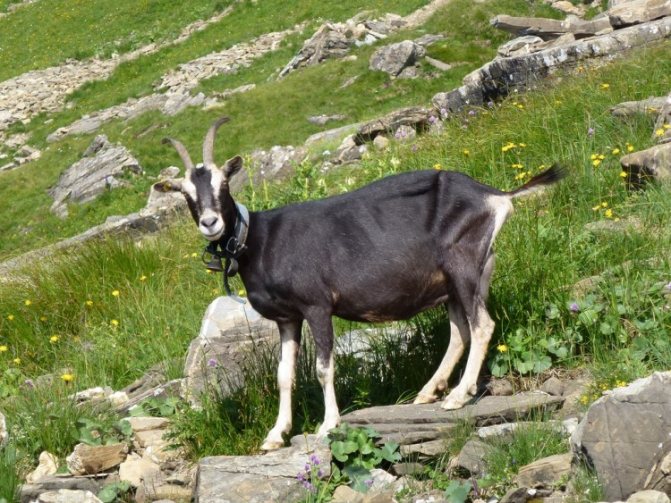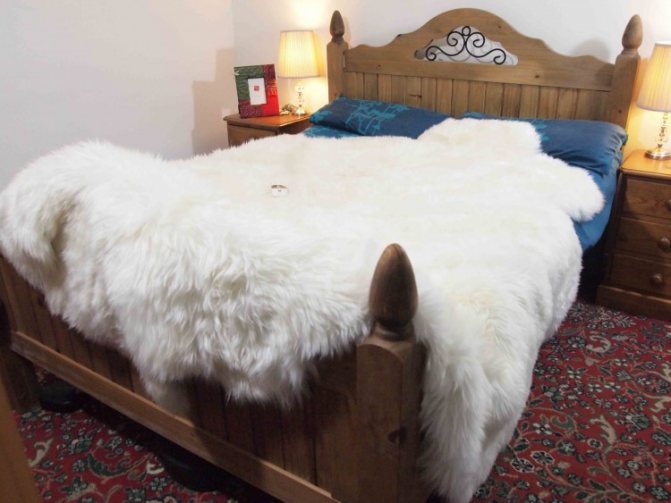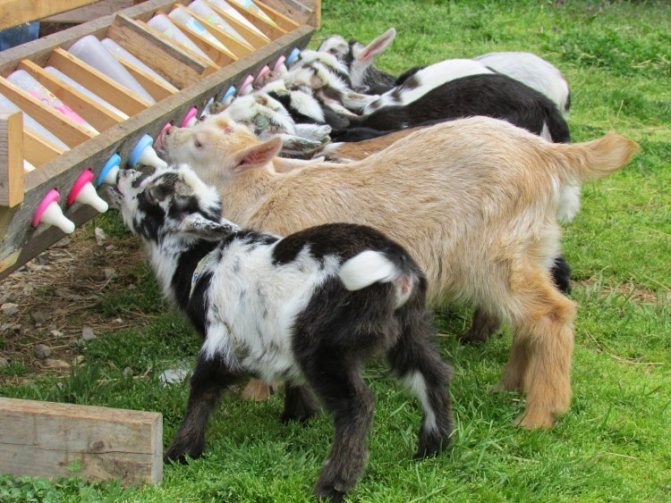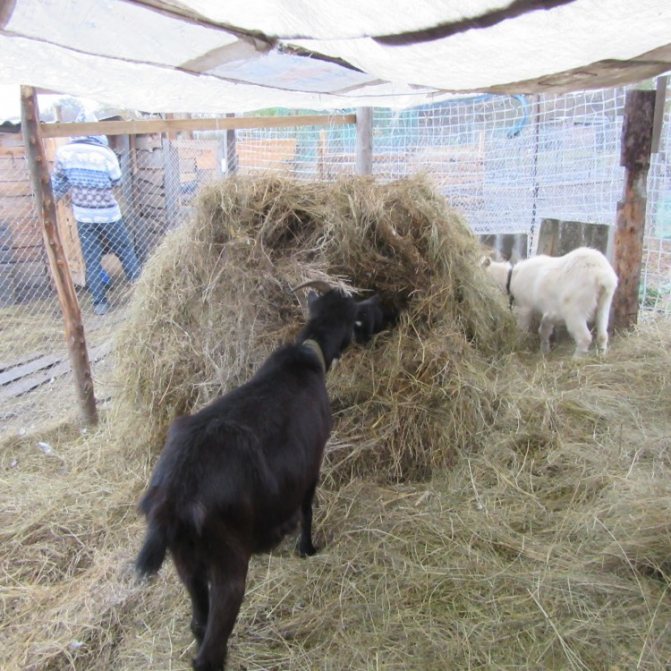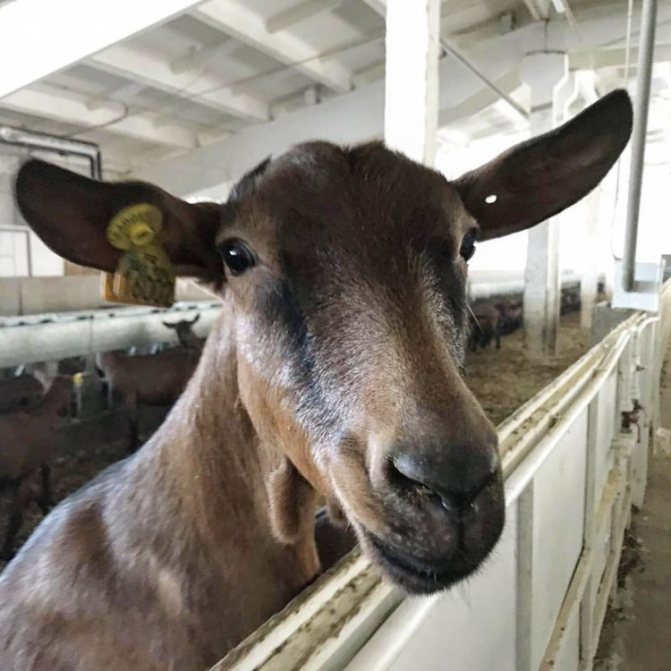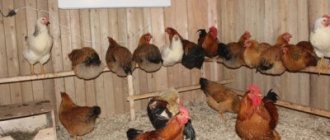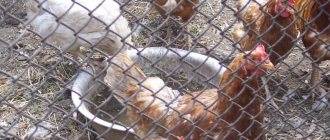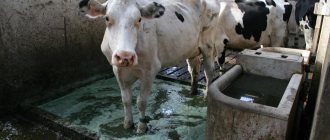Goats are small ruminants well suited for domestic use. These are unpretentious and hardy animals. Goats survive well in any climatic conditions and are ready to eat almost any plant food. They are very sociable and bring a lot of positive emotions to their owners. And most importantly: these animals are a source of quality milk, meat and wool on the farm. What you need to consider before you start a goat in the courtyard, we will tell you in this article.
Goat in the courtyard - 5 tips for beginners
Choosing a goat breed for home breeding
Depending on what product can be obtained from the animal, the following groups are distinguished:
- dairy;
- woolen;
- downy;
- meat.
Most aspiring farmers start dairy, meat and mixed breeds. Goat's milk is much healthier than cow's milk. However, it can only be obtained in sufficient quantities from dairy goat breeds.
Downy breeds are quite in demand. The largest amount of down comes from castrated goats. Such individuals are distinguished by more powerful bones and coarser hooves.

Several breeds of goats are often used for domestic breeding.
Wool breeds are not as common as downy breeds. Wool in its structure is slightly coarser than fluff, but still softer than sheep's wool. There are also wool-down varieties.
In most cases, goat meat has a specific smell. Several meat breeds have been bred, which are distinguished by good taste. The cost of breeding individuals is quite high. This is due not to the number of meat breeds, but to their absence on the domestic market. These types of goats are raised at home and not on large farms.
Video about choosing a goat for a household
Division by type
To date, more than two hundred breeds of domestic goats of the following types are known:
- Dairy.
- Meat.
- Woolen.
- Downy.
- Decorative.
- Mixed.


The names themselves speak of the purpose of each individual direction.
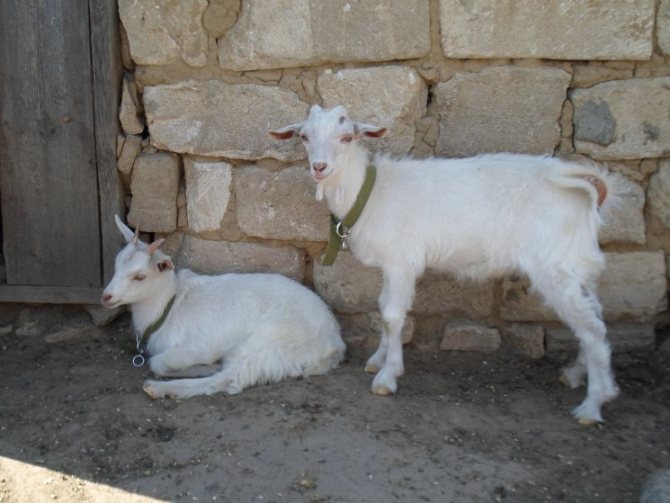

What to look for when buying a goat and kid
Experienced farmers do not recommend buying just one goat as it is a herd animal. Alone, it becomes hyperactive. It is important to buy an animal only from a trusted location. It is best to buy a goat from a special farm, where you can see the pedigree and living conditions.
Often novice farmers purchase a pregnant goat - this is beneficial, since soon the goat will begin to milk and the livestock will increase. But you need to understand that care problems will also increase.
When choosing a goat, you need to pay attention to the physique. Normal weight is 50-60 kg. Downy and meat breeds are larger, the dairy goat has a leaner build with a wide chest. Before a purchased dairy breed, you need to inspect the goat from the side: the front and back of the animal should be in the same line.
The udder plays an important role, therefore, when buying it, it must be examined. In a healthy dairy goat, the udder is clearly visible, does not sag, and has the shape of a pear or a bowl.
The optimal age of the animal for purchase is 2-3 years, since after 6-7 years of life, the goat practically stops giving milk. You also need to pay attention to the jaw. An adult should have 32 teeth.Young goats have healthy incisors.
It is best to buy a kid at the age of 2-3 months. By this time, the skeleton of the animal was already practically formed. A healthy individual has a large body and a wide chest.
Video tips for the correct purchase of a goat
The promenade is a must!
Keeping goats requires regular walks in clean air. The ideal option is green meadows and glades covered with young tasty grass. But if it is burdensome, then the aviary must be built without fail.
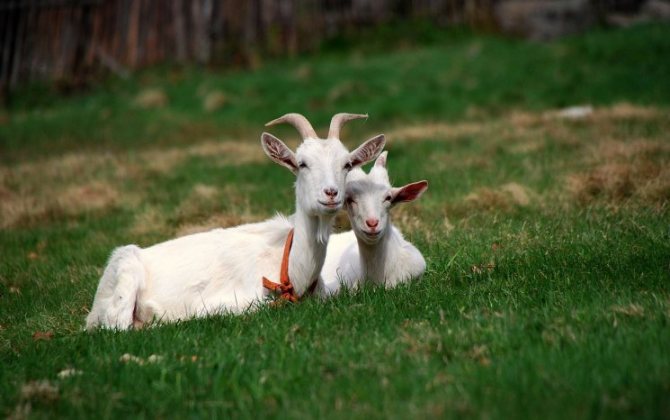

We make an aviary: some part of the territory must be surrounded by a 1.5 m high fence. Sow a mixture of various useful herbs purchased at a pet store. And release pets at any convenient time. In hot summer - provide a canopy.
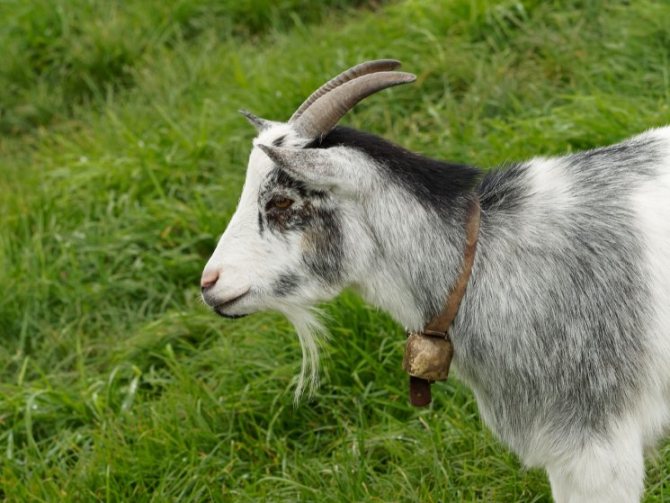

Ways of keeping goats
Barn device
In order for the animal to grow well and give high yields, it must be properly maintained. The goat quickly adapts to new conditions, tolerates cold and sun normally. In this case, the containment shed must be dry and warm.
When arranging a room, you should pay attention to the following indicators:
- temperature;
- humidity;
- degree of ventilation;
- lighting.
The minimum air temperature in the barn is 5 °, but it is better to keep it within 10 °. In summer, the room should be cool - about 18 °. It is not recommended to keep the goat in a humid place. The optimal indicator of air humidity is 75%. It is important that the floor is dry.
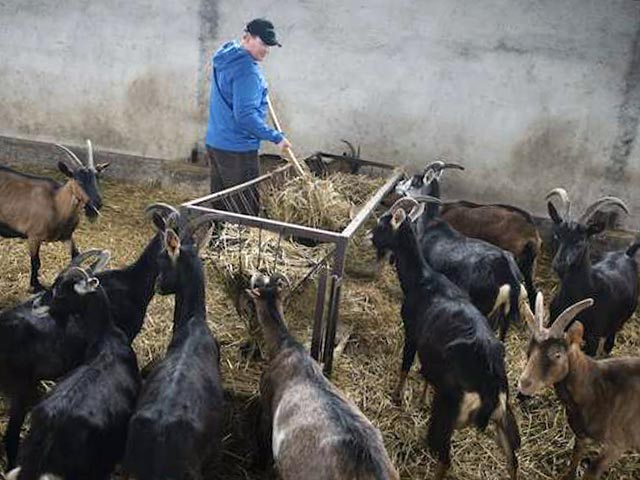

Keeping goats in a group is also practiced in private farms.
The room should be well ventilated, but drafts should be avoided. During the whole daylight hours in the barn should be light. Good lighting is essential for the normal development of juveniles.
The shed should be quite spacious. The exact area is calculated based on the number of heads to be kept. The ceiling should be at least 2 m, but not higher than 2.5 m. 1.5 m2 is required for one adult. For young animals, you need to create a separate place; special stalls will be equipped for them.
It is important to build the stalls correctly, if they are too cramped, this will negatively affect the amount of milk yield. The front post of the stall should look like a low door with strong hinges. The optimum height is 1 m. For maximum convenience, a manger for hay is placed on the wall.
Pasture - breeding goats for walking
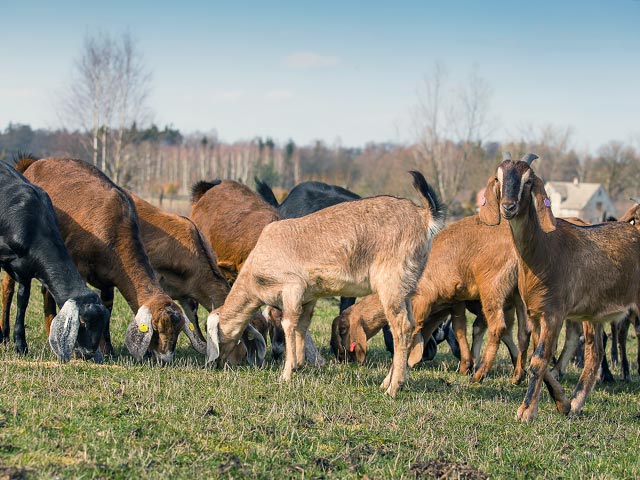

In summer, goats can be bred on pastures
Any pasture is suitable for grazing goats. Exceptions are flooded meadows and swampy areas. If the animal grazes in a wet area, then there is a high risk of developing helminthiasis and hoof diseases.
In most cases, a grazing system is used for grazing goats. It is especially often used in mountainous areas, where different meadows and fields are present in the same geographical area. Otara is located on the pastures seasonally. In autumn and winter, animals are transferred to lowland and flat pastures.
In spring, vegetation is restored on winter pastures, which in turn contributes to weight gain in goats. This is important, since it is in the spring that the brood campaign begins. Over the summer, the goat manages to gain weight well.


If there is no time, the goat can be kept on a leash - it is important to rearrange the peg so that the goat has something to eat
Video on the experience of keeping goats on private farms
How to equip a goat's house?
Check out these articles as well
- Cucumber variety Spring F1
- Raspberry variety Caramel
- How to plant dill seeds
- Bee wax
After building the main building, you need to think about how to equip the goat house so that keeping the goats is simple and not troublesome.


Goats love to sleep on higher ground.
- It is advisable to make feeders in a common room, and not in each separate stall.They are usually long troughs. They are hung at such a level that it is convenient for the individuals to eat, but it is not recommended to put them on the floor so that the animals do not walk on the troughs and do not contaminate the food. The length and height of the installation of the troughs depends on the number and age of the animals.
- Drinking bowls are another matter, they can be put in each stall, especially since water should be in the stall with a pregnant or lactating female. Sometimes water is simply poured into buckets, but the kids can turn them over, so it's easier to make special mechanical drinkers or pour water into overhead buckets.
- Goats love to sleep on higher ground. If you put bales of straw in the goat's house, they will certainly climb onto them and sleep there. To make it easier for them, it is worth putting a small bale in each stall so that they sleep comfortably. Such a shenanigans will also save them from illness - sleeping on soft straw is much more pleasant than on a cold floor, albeit with a bedding.
- So that the air in the goat's house is clean, and there are no unpleasant odors, the floor is made with a slope and a drain is arranged below so that all the slurry is poured there. This will significantly improve the appearance and condition of the goat's rue, and keeping the goats will become a much more enjoyable process.
- It's worth worrying about bedding as well. Usually it is put only in stalls, since it is not required in a common room - goats do not sleep there. They make it from rough, cheap straw, which animals will not eat.
Feed and feeding scheme
Goats eat almost any food. It can be succulent food, leaves of shrubs and trees. The basis of the diet is grass and hay. However, in order for the animal to receive all the necessary vitamins and minerals, it must be fed.
Types of goat feed
At any time of the year, the focus is on succulent feed. Such food is presented:
- grass;
- garden tops;
- silo;
- vegetables;
- fruit.
Grass is the most readily available and cheapest type of feed. From the garden tops, cabbage or beet leaves can be used. To reduce the acidity of such products, chalk must be given along with them. For 1 kg of tops, about 1 g of chalk is taken.
Silage is a valuable food additive. It is important that it is of good quality. Sometimes, due to improper storage, the silage begins to acidify. According to its properties, such a product is fully consistent with fresh grass. A goat can be given no more than 4 kg of silage per day.


At home, goats can be given crop waste and table leftovers.
In winter, vegetables and fruits must be added to the diet. From vegetables, you can give beets, cabbage and carrots. Root crops are given in a chopped form, 3-4 kg per day. Natural feed contains a large amount of vitamins, proteins, minerals and nutrients.
The roughage group includes the following products:
- hay;
- straw;
- branch feed.
Straw and hay help to improve the functioning of the digestive system. One animal should eat 2-3 kg of roughage per day. To use the product more economically, it is recommended to pre-grind and crush it. For this, special installations or a simple ax can be used.
Branch fodder - tree branches. Poplar, willow, maple and aspen are perfect. The branches are pre-cut into small twigs 60 cm long. In winter, 3-5 such brooms are given per day.


The third category of feed is concentrated. If used incorrectly, the goat can develop gastrointestinal tract disease. In most cases, oats or barley are given. Cereals must be grinded beforehand. A good option for feed is compound feed and bran. Corn is given in moderation to goats. If there is too much of it in the animal's diet, then it begins to gain fat.
Feeding scheme
Feeding should be done according to the schedule. If it is not there, then this will negatively affect the general condition of the animal and the amount of milk yield.The optimal food intake for a goat is 3-4 times a day. The time intervals must be the same. It is recommended to give heavy feed in the morning and in the afternoon, and lighter ones in the evening.
It is important to give enough water. After eating, the goat should drink 2.5-4 liters of water. The rest of the time, the animal must have free access to water. Its temperature should not be lower than 6 ° and not higher than 10 °.
Goat care
The whole point of caring for a goat is timely cleaning in the barn. Untidiness has a negative effect on the general condition of the animal, the taste and smell of milk.
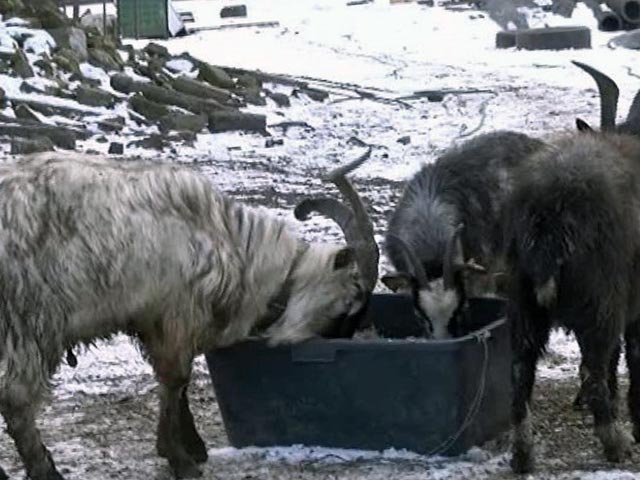

In winter, keeping goats on the pasture is difficult - you need a barn, and for meat breeds, a warm paddock is suitable
Barn cleaning
Goat care begins with bedding. It should always be dry and abundant. Otherwise, the goat will apply the hay on its own. A straw underlay is ideal for wooden floors. You can put peat on concrete or brick. It fits under the straw. If this is not done, the animal will get dirty and hurt.
The goat prefers to lie on the ground, while pushing the bedding aside. It is important to remove manure in a timely manner. Fresh is harvested daily, and thorough cleaning is carried out 1-2 times a month. To carry out this cleaning, you must use a soapy solution. During the lambing period, manure is harvested less often, as it allows you to keep warm.
If the animal has long hair, then it must be periodically combed out with a comb with metal teeth.
Milking goats
An important part of goat care is milking. The frequency of obtaining milk directly depends on the milk secretion of the animal:
- in winter, milk is collected 2 times a day with an interval of 12 hours;
- in summer it is recommended to milk the goat 3 times - until 7 am, at lunchtime and at 5-7 pm. In this case, the interval should be about 8 hours;
- in the first months of lactation, the amount of milk will be quite large, but over time, milk yield begins to decline.
Video how to care for a goat
Cozy place to stay
It is not difficult to place goats in terms of choosing a room. They get along well both in a barn, a goat's house, and sometimes in a high attic, where they can easily climb.
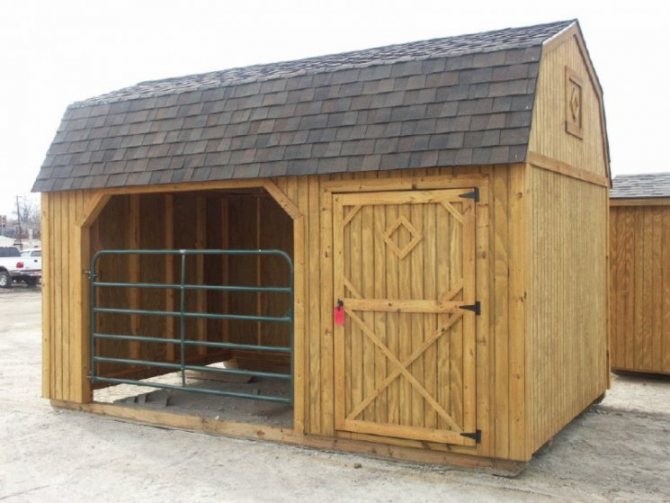

Nevertheless, it is necessary to take care in advance that the chosen place is equipped for the animals, taking into account their sleep or meal.
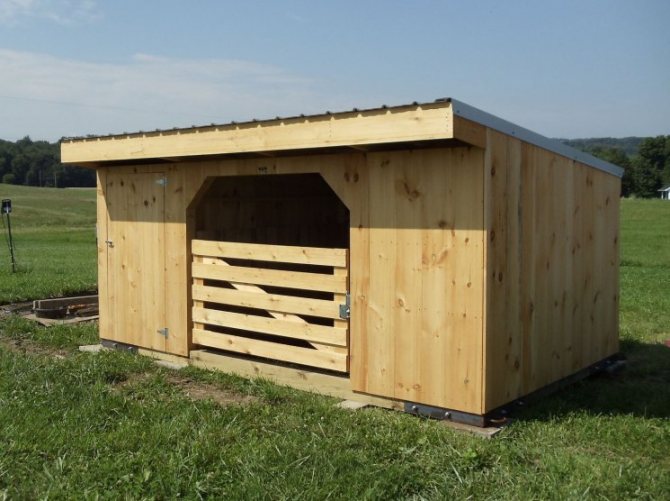

There should be a lot of space in a spacious room so that there are no problems to milk, take for a walk. Of course, you will have to build separate stalls if there are more than 5 goats.
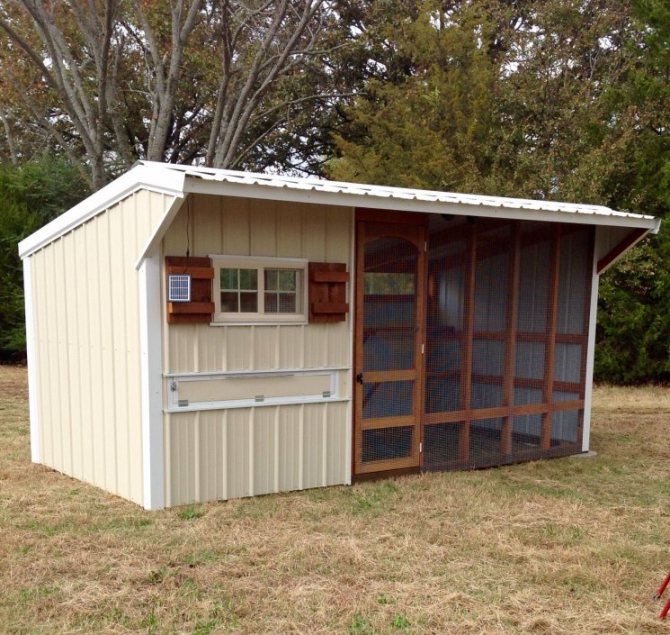

For example, it is recommended to keep no more than 2 animals in one stall. This does not apply to females with small kids, they are all housed together until the babies come off the mother's milk.
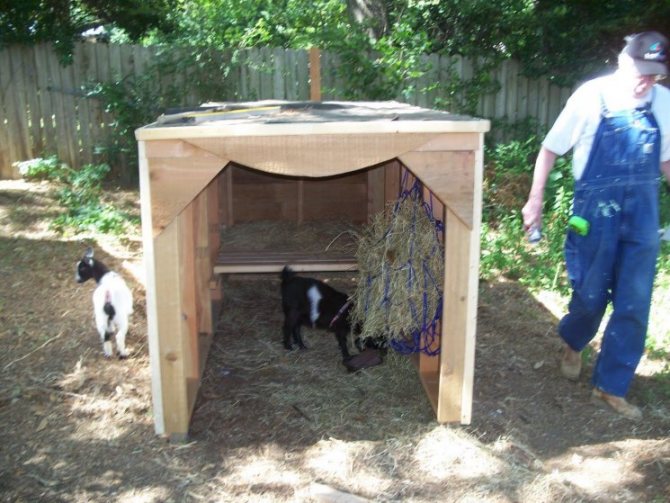

Important: males need to live separately from females so that the pungent smell of a goat is not transmitted to milk.
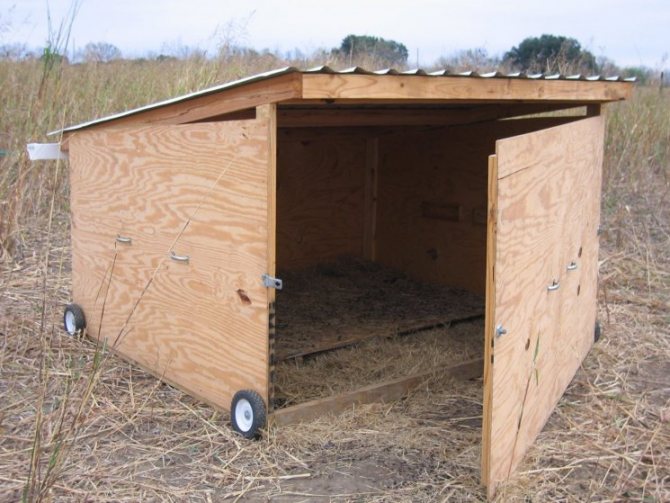

Breeding goats
Matching and mating
When choosing a pair for mating, you must be guided by certain requirements. They are needed to maintain productive and breeding qualities. Bonitization is the process of dividing goats into groups according to individual indicators: productivity, conformation and constitution. It can be done individually or in groups.
Evaluation of productivity is carried out by weighing the goat, measuring the amount of wool and fluff. The quality and fat content of milk is also analyzed.
Goats are judged by the number of offspring. The first selection of sires is made a few weeks after birth. After selection, all individuals that are not suitable for breeding are castrated. The selected kids form a separate group that receives enhanced care. The second selection is carried out during the period of weaning of goats from the mother, that is, at the age of 4 to 6 months.
The breeder selected for mating must have the following qualities:
- absence of diseases;
- strong constitution;
- good sexual vitality;
- high mobility;
- the presence of clear signs of the breed.
It is important that the mating couple receive all the vitamins and minerals they need. Improper nutrition can cause problems with offspring. The lack of vitamins A, E, iodine and iron has a negative effect. It is these substances that are needed for good sperm quality.
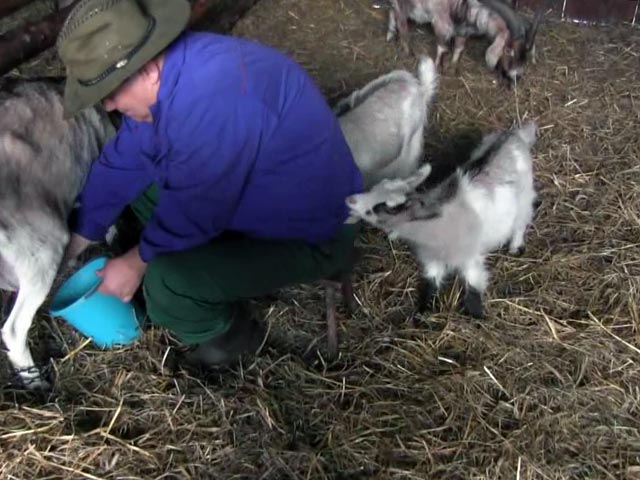

To properly mate, you need to know the signs of hunting. They are most active in the period from September to February. The sexual cycle lasts from 18 to 24 days. The exact time depends on the breed and individual characteristics of the animal. The hunt lasts from 12 hours to 4 days.
Caring for a pregnant goat
A pregnant individual requires special care and proper nutrition. It is important to constantly monitor the well-being of the animal. The feed must be balanced and in sufficient quantity. Hunger is dangerous not only for the goat, but also for the fetus.
An important aspect is the feeding technology. Eating should be started with swill. First, concentrated feed is given, then juicy and coarse. Drinking water makes it easier to digest food. In this case, the water should always be warm.
Goat care
The care and feeding of the kids depends on the way of growing: with or without a goat. In the first case, the kids must be brought to their mother within an hour after lambing. The first time you need to help the kids to find the udder. Depending on the milkiness of the goat, the kids can eat from 6 to 8 times a day.
The second option for feeding kids is most often used in dairy filmmaking. The bottom line is that the goat is fed with mother's milk, but through a bottle. During the first 3-4 weeks, the kids feed 4-6 times a day, and then they are gradually transferred to three meals a day. It is important to teach a newborn animal to drink water, if this is not done, the kid will refuse to drink. A small amount of wheat bran can be mixed into the water.
Goats are great for both small households and large farms. In order for the animal to give good milk yield, it needs to create optimal conditions for keeping, as well as to properly organize the feeding process. It is recommended to buy goats, like other animals, from proven farms, where all the necessary documents and good conditions for keeping the young are present.
Milking
This process can be started after childbirth. In this case, it is better to separate the kids from their mothers. Often this is done after the kid has reached a couple of months. But it must be taken into account that the goat will give milk for a little more than 50 days. At this time, you need to cover (mating).
Hygiene is an important part of milking. Hands should be washed thoroughly, and the goat itself should be trimmed with all the hair around the udder to prevent dirt and hair from getting into the milk. When using special machines, keep them clean. Treat the udder before milking. To do this, use warm water or disinfectants.
The most common milking techniques are:
Fist. This method is suitable if the goat has a large udder. First, we squeeze the nipples at the bases with thumbs and forefingers, and then we do a few taps. It is better to lower the first jets into a separate container, as they contain a large number of bacteria. Then we squeeze the nipple into a fist and rhythmically express the milk;
Plucked. Very similar to the fist milking technique, but using the fingers instead. This style may work for goats with small udders;
Mixed. First, we act with a fist, and then we refine it with our fingers. The main principle is to milk everything, because the largest amount of fat is in the leftovers.
Do not make sudden movements while milking a goat. It is also undesirable to slow down the rhythm or stop completely, because this reduces the amount of milk that you can get.Milk dry to prevent mastitis (inflammation of the breast).
